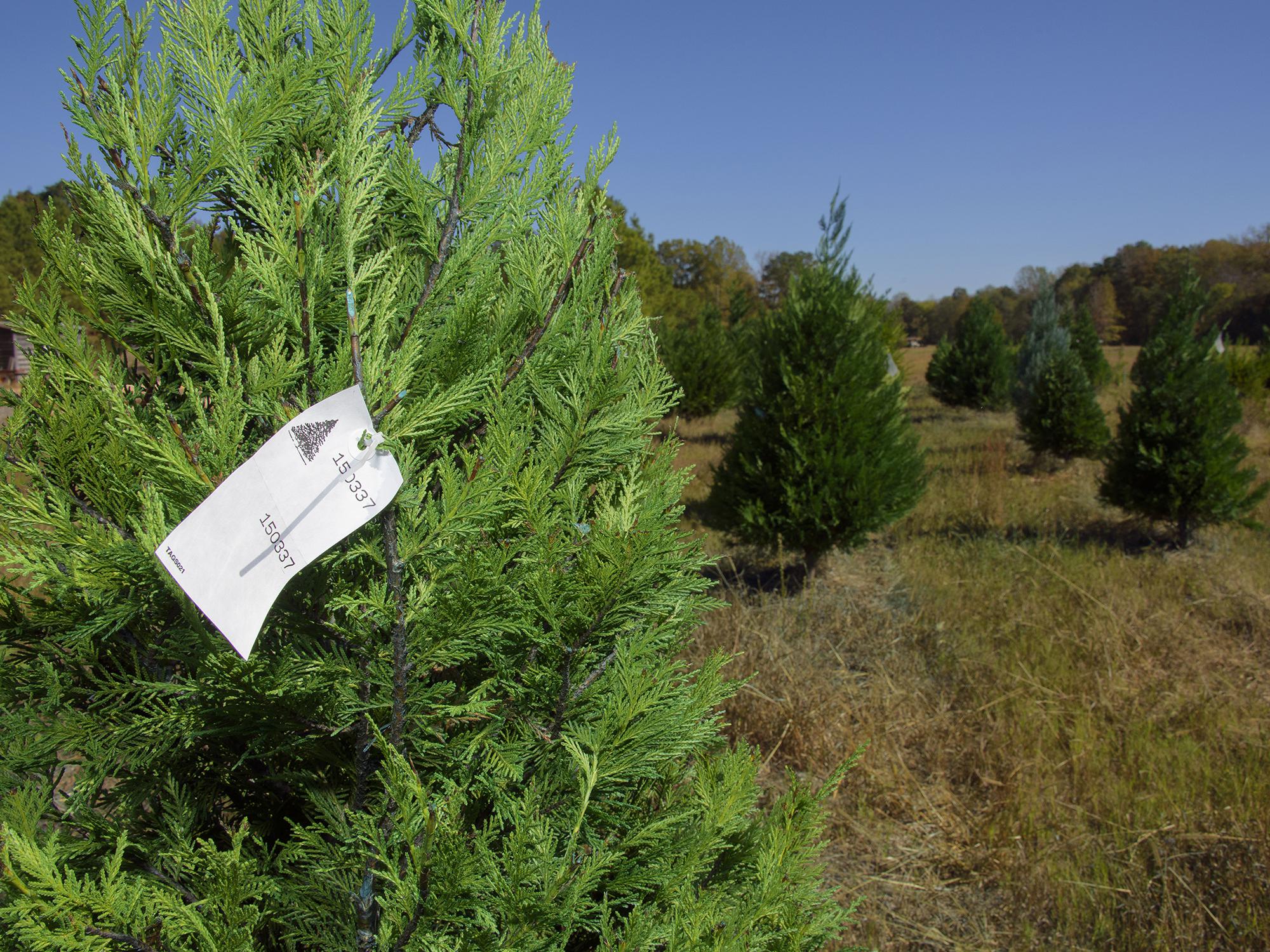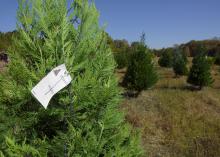Information Possibly Outdated
The information presented on this page was originally released on November 11, 2016. It may not be outdated, but please search our site for more current information. If you plan to quote or reference this information in a publication, please check with the Extension specialist or author before proceeding.
Christmas tree production holds, demand still rising
SAUCIER, Miss. -- Larry Haley has no problem selling his Christmas trees each November.
In fact, he has to set a limit on how many he can spare and stop once he reaches that number to maintain a steady inventory. His target this year is about 300 choose-and-cut trees before Thanksgiving.
"A couple of years ago, I got in trouble because I sold too many in one season and almost depleted the next year's stock," he said. "Last year, we started holding fields back for a season so that doesn’t happen again."
Like his colleagues across the state, Haley has experienced a solid production season despite the recent drought. Dry weather compromised some of what he planted in 2016 and kept the trees in this year’s harvest from being as thick as normal.
“October to the first part of November is when our species fill in. It’s kind of like a growth spurt at that time,” said Stephen Dicke, a forestry professor with the Mississippi State University Extension Service. “The lack of rain has not affected height growth, which is usually about 8 feet and set in the first part of the year. Some customers prefer their trees to be more open anyway. The Christmas tree buyer will get a high-quality tree from the farm this year.”
Current production is projected to be flat, which means producers will sell more than 30,000 trees for about $1.7 million. The average cost will remain $56 per tree, or $7-10 per foot.
Leyland cypress varieties -- including Ovensii, Notabillis and Murray X -- are grown most often in Mississippi. Growers also plant varieties of Western cypress, including Carolina Sapphire, in large quantities.
Customer demand has led growers to supplement their inventories with trees from outside the state. Most of these are North Carolina Fraser firs, which are desirable because their rounded needles and sturdy branches hold Christmas ornaments well.
Both the locally grown and imported trees are safer than most artificial trees because they are practically incombustible, Dicke said.
“Hybrid varieties can tolerate room temperature well for a month as long as they are watered regularly,” he said. “You would need a blowtorch to catch one of them on fire, and the flame would go right back out before it could possibly spread to another object.”
Offering out-of-state trees is not the only tactic growers are using to attract more customers. Haley said the biggest change he’s seen in the industry since he planted his first trees in 2007 is the addition of agritourism at many tree farms.
“Having a fun activity like a pumpkin patch or corn maze can make you just as much money as growing the trees,” he said. “But Christmas trees will always be the basic thing to stick with because that’s the main draw.”



